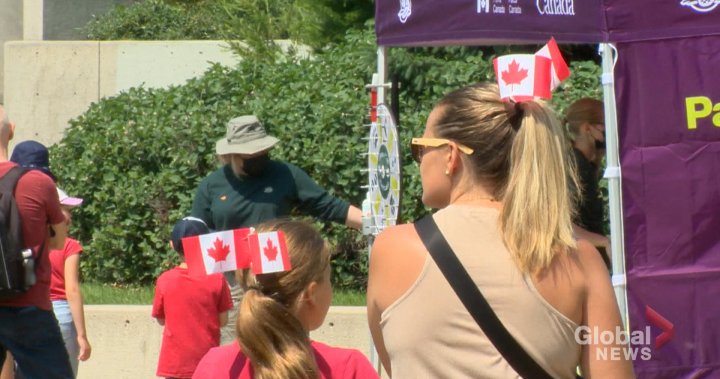Article – Summer kicked off with a bang across Saskatchewan this weekend as communities from Yorkton to Swift Current welcomed the return of beloved festivals. The province’s cultural calendar is filling up fast, with events celebrating everything from Indigenous heritage to agricultural traditions drawing thousands of eager attendees.
In Regina, the Cathedral Village Arts Festival wrapped up its week-long celebration with a street fair that transformed 13th Avenue into a vibrant marketplace. Local artist Maya Goodwin, whose pottery booth saw steady traffic throughout the day, noted the change in this year’s atmosphere. “There’s something different in the air this summer. People seem ready to connect again in ways we haven’t seen since before the pandemic,” she told me as families browsed handcrafted wares stretching down several blocks.
The attendance figures support Goodwin’s observation. According to festival organizers, approximately 30,000 visitors participated in various Cathedral events this year, marking a 15 percent increase from 2023. The economic impact isn’t insignificant either. Tourism Saskatchewan estimates that summer festivals contribute over $40 million annually to the provincial economy.
Further north, Prince Albert’s Summer Solstice Indigenous Festival drew participants from First Nations communities across the province. Elder Joseph Naytowhow opened ceremonies with a traditional prayer before dance competitions and cultural demonstrations began at Kinsmen Park. “These gatherings aren’t just celebrations,” Naytowhow explained. “They’re living connections to traditions that have sustained our communities for generations.“
The return of smaller community events is particularly noteworthy this year. In Maple Creek, population 2,100, the Taste of Maple Creek food festival saw record attendance as visitors sampled dishes from local restaurants and producers. Mayor Michelle McKenzie credits these events with revitalizing small-town Saskatchewan.
“Our summer festivals aren’t luxury items – they’re economic lifelines,” McKenzie said during the opening ceremony. “When visitors come for a festival, they stay in our hotels, eat in our restaurants, and shop in our stores. The impact lasts far beyond the weekend.”
Recent provincial funding changes have affected how some festivals operate this year. In April, the Saskatchewan Arts Board announced a restructured grant program that reduced funding for some smaller events while increasing support for tourism-focused festivals. This shift has left organizers scrambling in some communities.
In Moose Jaw, Festival of Words director Sarah Simison has noticed the change. “We’ve had to be more creative with our resources this year,” she explained as volunteers set up for next month’s literary festival. “Thankfully, local businesses have stepped up with sponsorships, but it’s a challenging environment for arts organizations.”
Despite funding challenges, Saskatchewan’s festival calendar remains impressively diverse. Saskatoon’s SaskTel Saskatchewan Jazz Festival kicks off June 28, featuring a lineup that includes both international headliners and homegrown talent. Festival executive director Melissa Scholz expects this year’s event to draw visitors from across Western Canada.
“Our ticket pre-sales are tracking 20 percent ahead of last year,” Scholz said. “People are booking accommodations earlier, planning longer stays, and budgeting for multiple shows. There’s a hunger for live experiences that seems to be growing each year.“
That hunger extends to the province’s numerous agricultural fairs and exhibitions. The Yorkton Exhibition, running July 3-6, combines traditional agricultural showcases with entertainment that appeals to urban visitors. Exhibition manager Shaun Morin has witnessed the evolution of these events firsthand.
“Twenty years ago, these fairs were primarily about agriculture and livestock,” Morin reflected. “Today, they’re meeting grounds where rural and urban Saskatchewan connect. You’ll see farm families chatting with city folks who’ve never seen a combine up close.”
For families, these festivals offer affordable entertainment options during increasingly expensive summer months. The Indian Head Agricultural Society Fair, established in 1882 and one of the province’s oldest continuous events, has maintained its $10 admission price despite rising costs.
“We’ve worked hard to keep our fair accessible,” said board chairperson Lisa Burton. “Summer shouldn’t break the bank for families wanting to create memories.“
Weather remains the perpetual wild card for outdoor events. Environment Canada is predicting a warmer-than-average summer for most of Saskatchewan, welcome news for organizers who’ve battled unpredictable conditions in recent years. Still, contingency planning has become standard practice.
“We’ve learned to adapt,” said Swift Current’s Long Day’s Night Music Festival coordinator James Wilson. “After last year’s thunderstorm sent everyone running for cover mid-concert, we’ve invested in better weather monitoring and communication systems.”
Indigenous-led festivals are seeing particularly strong growth this year. The Wanuskewin Powwow near Saskatoon expects to welcome participants from across North America when it returns in August. Site CEO Darlene Brander sees these gatherings as essential cultural touchstones.
“These aren’t just performances for tourists,” Brander emphasized during a recent site visit. “They’re living expressions of cultures that have thrived on these prairies for thousands of years.“
As the festival season gains momentum, Tourism Saskatchewan spokesperson Michael Dawson notes that the province’s event calendar plays a crucial role in attracting visitors. “Our research shows that nearly 40 percent of summer tourists plan their visits around specific festivals or events,” Dawson said. “These celebrations showcase Saskatchewan’s cultural diversity in ways marketing campaigns simply can’t match.”
For communities large and small across Saskatchewan, summer festivals represent more than entertainment – they’re expressions of local identity and tradition. As Regina resident Thomas Chang watched his children explore interactive art installations at the Cathedral Village Arts Festival, he reflected on what these gatherings mean.
“In winter, we hunker down in our separate spaces,” Chang said. “Summer festivals are when Saskatchewan truly comes alive. They remind us we’re part of something bigger – a community that values creativity, heritage, and simply being together.“






